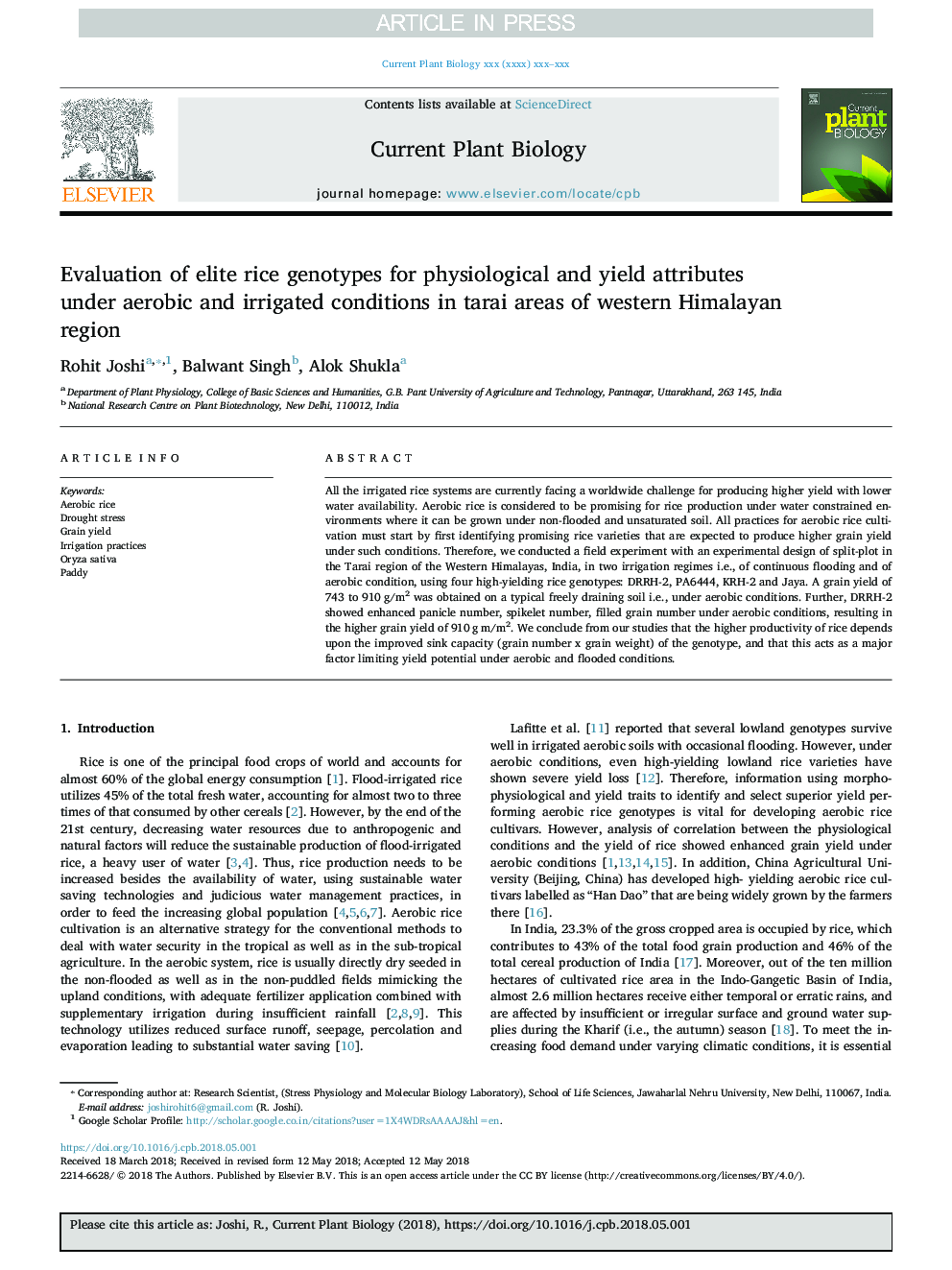| Article ID | Journal | Published Year | Pages | File Type |
|---|---|---|---|---|
| 6964977 | Current Plant Biology | 2018 | 8 Pages |
Abstract
All the irrigated rice systems are currently facing a worldwide challenge for producing higher yield with lower water availability. Aerobic rice is considered to be promising for rice production under water constrained environments where it can be grown under non-flooded and unsaturated soil. All practices for aerobic rice cultivation must start by first identifying promising rice varieties that are expected to produce higher grain yield under such conditions. Therefore, we conducted a field experiment with an experimental design of split-plot in the Tarai region of the Western Himalayas, India, in two irrigation regimes i.e., of continuous flooding and of aerobic condition, using four high-yielding rice genotypes: DRRH-2, PA6444, KRH-2 and Jaya. A grain yield of 743 to 910â¯g/m2 was obtained on a typical freely draining soil i.e., under aerobic conditions. Further, DRRH-2 showed enhanced panicle number, spikelet number, filled grain number under aerobic conditions, resulting in the higher grain yield of 910â¯gâ¯m/m2. We conclude from our studies that the higher productivity of rice depends upon the improved sink capacity (grain number x grain weight) of the genotype, and that this acts as a major factor limiting yield potential under aerobic and flooded conditions.
Related Topics
Physical Sciences and Engineering
Chemical Engineering
Bioengineering
Authors
Rohit Joshi, Balwant Singh, Alok Shukla,
